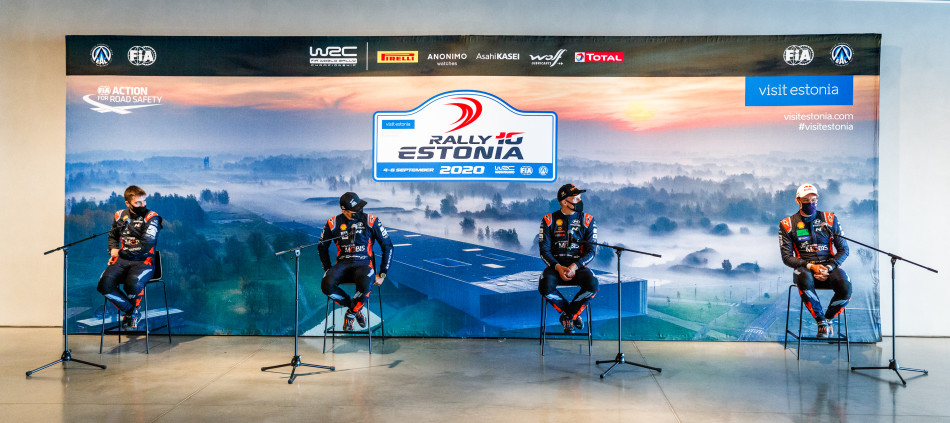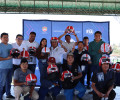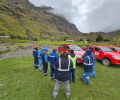EASU: how newcomer Estonia hosted a successful WRC restart
Read below the full Q&A with EASU Head of Sports Kuldar Sikk, in collaboration with Rally Estonia Coordinator Kristi Jeenas, and discover how the Estonian Autosport Union (EASU) and the rally organisers managed to host a safe and successful WRC event in Estonia, complying with FIA COVID-19 guidelines and restrictions.

Can you explain a little about the story of the Estonian Autosport Union (EASU)?
Motor sport has a long history in Estonia. The first events were organised at the beginning of 20th century. Markko Martin and Marko Asmer were real pioneers and demonstrated that everything is possible. They have helped a lot of young drivers, such as Ott Tänak, who has become the first Estonian World Rally Champion in 2019,and Jüri Vips, a member of the Red Bull Junior Team racing in Super Formula. Even if new disciplines are now becoming more popular, rallying is still the most popular motor sport in Estonia. Popularity of rallycross, drifting and drag racing is rising as well. We issue over 1,000 licenses and we have more than 100 different events per year.
What are your main projects in the motor sport area?
It is no secret that rallying is currently the most popular sport in Estonia. We have high standards and experience in organising rallies. We also have professional teams who participate in international championships. Safety is our main goal, now and for the future. We are working out new standards for organisers based on the FIA Rally Safety Guidelines and trying to bring knowledge from rallying to all disciplines.
Rally Estonia has run successfully since 2010, being part of the ERC and hosting a WRC Promotional Event last year. So you did not come completely unexperienced, but how did you manage to organise an event with World Championship standards for the first time, complying with COVID-19 guidelines and within such a short time?
We have always set ourselves the highest standards and dreamed that one day, it would be possible for us to be entrusted with organizing a WRC rally in Estonia. When the offer came from the WRC Promoter in early summer, we realised that it was a once in a lifetime opportunity. We managed to achieve all of this in 63 days thanks to the work and dedication of a young, motivated and experienced team.
Can you please highlight key measures of your COVID-19 protocol for attending teams, officials and media?
Thanks to the support of the Government, the establishment of a special committee and the involvement of the state authorities, we were able to move very quickly and efficiently. We developed the Rally Estonia COVID-19 protocol based on on the FIA Appendix S and the requirements of the Estonian Health Board, enabling the Rally Estonia COVID-19 Unit (RECU) to produce a comprehensive documentation and action plan. All people in the High-Density Area took a COVID-19 test in their home country and another one when arriving in Estonia. We took a total of 1,337 tests in Estonia and all of these were negative. We can proudly say that no infection resulted from the rally.
You managed to run the event with a limited number of 16,000 spectators. Can you tell us more about this?
We divided 16,000 spectators into groups of up to 1,000 people, planned their routes according to these groups, and provided all spectators (including children) with unique wristbands which chips carrying their identification codes. Also, we marked all cars with NFC stickers according to the rally pass groups and made the following Code of Conduct mandatory:
- Do not come when not feeling well
- Wear a mask
- Sanitize
- Move around in your group
- Stay in your group
- Do not socialise
- Download the HOIA app
We built parking lots and spectator areas, separated from the surrounding nature with fences, nets, and tapes. The movement of people and cars was controlled on the spot by access marshals who checked the compliance of the wristbands and personal identification documents. At all checkpoints, people were obliged to disinfect sanitize their hands and put on a face mask. By the precept of the Health Board, in cooperation with the Police and Border Guard Board, we monitored the movement of people in all perimeters of the spectator areas on the special stages so that non-validated people wouldn’t have access to the special stages.
You created a digital platform solution centralising all applications and testing, to enable all rally stakeholders to join in a safe and controlled environment. Was is one of the keys to success?
We had very strong cooperation and support from the Estonian Government and various institutions. Our success was based on a number of digital solutions (i.e. the digital platform of our testing partner SYNLAB, the HOIA app to limit the spread of the virus, etc). Cooperation, synchronisation, and mobilisation of all parties were keys to success.
How would you characterize the grassroots motor sport scene now?
2020 was very challenging. But things have changed fast and we are very happy that we could continue and start new projects at the grassroots level. . For example, the “Talents on Track” Go-Kart series supports youngsters who have no experience but still want to compete. Another grassroots project is “Youngsters at the wheel”, giving young people the opportunity to drive a real car in a safe and controlled environment. This helps them to later become more relaxed and experienced drivers. We are preparing logical ladder for young motor sport enthusiasts.
How does EASU go about encouraging young people to get involved in motor sport?
Ott Tänak has stepped out to help us motivate young people. He is a good example and very popular. Also, we are planning some activities with schools where pupils are building small electric buggies and EASU will run the competition.
What is your ASN doing to make motor sport sustainable?
We believe cost capping and tight competition are the keywords to attract newcomers, especially among the youth. We aim to set up a reasonable and logical ladder to step up in motor sport and also to ensure the most talented drivers to be promoted. Estonia’s top drivers such as Markko Märtin and Marko Asmer are still involved and willing to help youngsters. World champion Ott Tänak himself has already done some remarkable contribution to ensure motor sport sustainability. Not only sportsmen but all the motor sport infrastructure is important. There are always limited resources. Our role is to support every initiative of founding or renovating facilities. Our role is to support and encourage people to seek their opportunities not only as athletes but also as marshals, organizers, mechanics, etc. Last but not least, we need to be accepted and supported by the society and the government. We need to be more than just a sport, set a good example and behave responsibly. We need to contribute to the culture, the economy and people’s welfare.
Where do you see motor sport going in Estonia across the next 10 years and what role do you think EASU can play in the future?
We try to keep Estonian motor sport competitive and attractive for local and foreign drivers. In such way, we create the preconditions for our competitors to do well at the international level. Local championship and cup events will be organised with high standards and will continue to have a healthy number of participants. We have to ensure the sustainability of motor sport and create a supportive motor sport system which helps to grow the next champions.


 Facebook
Facebook Twitter
Twitter






